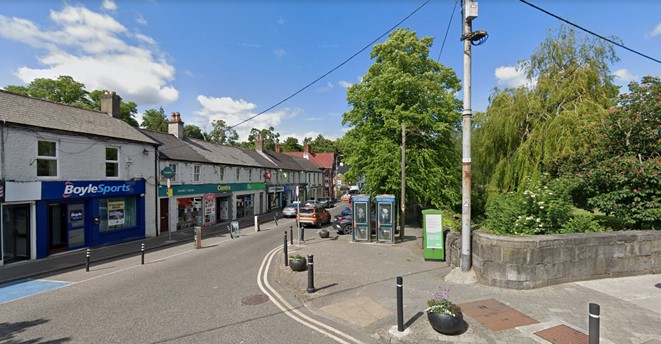Dublin Civic Trust Wins Major Europa Nostra Award 2021 for restoration of 18 Ormond Quay Upper
Padraig Conlon 25 May 2021
The built heritage organisation Dublin Civic Trust has won a major international heritage award for the conservation of a 19th-century merchant building sited on the Liffey quays.
18 Ormond Quay Upper was selected with eight other conservation projects around Europe for the European Heritage Award / Europa Nostra Awards 2021 which celebrates and promotes significant heritage achievements across Europe. In total, 24 projects were awarded in a variety of categories by the international jury.
18 Ormond Quay was restored by the Trust over a three-year period since 2017 as a demonstration project under its ‘revolving fund’ mechanism, showing how historic buildings in the centre of Dublin can be sensitively restored with a residential component.
It is the eighth building the Trust has restored since its foundation in 1992 and the first award Ireland has won in Europa Nostra’s conservation category since the Office of Public Works was awarded in 2005 for its restoration of the Victorian Great Palm House complex in the National Botanic Gardens.
The project was majority funded by Dublin Civic Trust’s revolving capital fund with additional support from Dublin City Council.
Specific works grant assistance was secured from The Heritage Council and the Built Heritage Investment Scheme of the Department of Housing, Heritage and Local Government administered by Dublin City Council, as well as private donations from the Apollo Foundation, Irish Georgian Society and the Primrose Trust
The four-storey over basement building at 18 Ormond Quay was constructed in 1843 as a grocer’s shop with solicitors’ chambers and residence above.
The building replaced at least two previous houses on the same site since construction first began on Ormond Quay in the 1680s.
It features a rare arcaded granite shopfront that is thought to predate the 1840s reconstruction and may date to the 1780s when such shopfronts were popularised by the Wide Streets Commission, Georgian Dublin’s planning body.
Above a ground floor shop is a three-bedroomed, three-storey residence that was completely refurbished using traditional skills and authentically decorated in the style of the mid-19th century with Dublin-made wallpapers and decorative finishes.
An older house dating to the 1760s is attached to the rear on Arran Street East and will be the future second phase of the restoration.
Its interiors retain high quality rococo-style plasterwork and joinery dating to the mid-18th century.
Both buildings were converted into the Douglas Hotel in 1912 and were latterly known to a generation of Dubliner’s as Watt’s Bros. hunting and fishing purveyors who closed in the year 2000.
Phase II of the project will involve the conservation of the 18th-century rear building on Arran Street East and the Trust is now seeking public support to help fundraise for its refurbishment.
Commenting on the award, Geraldine Walsh, CEO of the Trust, said:
“We’re delighted to receive the recognition of Europa Nostra for the Trust’s many years of work in highlighting the beauty and essential resource value of Dublin’s historic buildings. Often it takes the outsider to point out what is of intrinsic good on our own doorstep. This is a ringing endorsement that Dublin’s old buildings have significant cultural, economic and environmental value and we must take action to carefully invest in and reuse them.”
Graham Hickey, Conservation Director in the Trust said:
“The aim of the 18 Ormond Quay project was to highlight how these modest street buildings, though not a grand statement individually, collectively shape the essential identity of Dublin. All of their elements, from brickwork to windows to plaster details, are specific to our city and can be cost-effectively conserved. We’ve proven how manners can be put back on the streetscape and we hope other building owners and investors will take note and step up to reanimate their own premises – especially in the post-Covid context.”
Speaking about the award, Lord Mayor, Hazel Chu, said:
“I want to congratulate the Dublin Civic Trust on winning this major international heritage award for the conservation of 18 Ormond Quay Upper. The importance of preserving the built heritage of our city cannot be overstated and I applaud the great work being done by the Trust to ensure that these buildings are conserved and made available for future generations of Dubliners to enjoy.”
The Europa Nostra international Jury particularly appreciated that:
“the project was undertaken to specifically be a model for others, showing that the heritage of buildings common to Dublin has value and contributes to a more sustainable development of the city. The fundraising model is similarly replicable and was developed with the goal of it being repeated elsewhere”.
The Jury noted: “Meticulous research was carried out with significant efforts made to ensure a conservation-restoration that was consistent with the original values of the building and to conserve as much of the remaining details as possible. New features, such as the wallpaper, were carefully considered in terms of their authenticity. This humble, minimal conservation-restoration is nevertheless visible”.
Restoration was overseen by Kelly & Cogan conservation architects and Nolans Group historic building contractors.
Works involved significant structural stabilisation to the side gable wall which featured a dangerous lean into the side street. This was secured using a discreet system of metal ties and brick stitching to secure the wall back to the main structure.
130 square metres of cement-based 1970s pebbledash were removed from the brickwork of the upper facades using hand-held pneumatic tools.
Traditional Irish ‘wigging’, a form of lime pointing traditionally used in Dublin to disguise rough brickwork, was reinstated based on a sole surviving sample discovered behind a street sign. The chimneys, truncated in the 1980s, were also rebuilt to their original height.
The arcaded shopfront was stripped of decades of paint layers using steam cleaning and repointed in matching lime mortar. Authentic lamps that precisely replicate the form of historic oil lamps found in James Malton’s engravings of Dublin were commissioned from blacksmith Paul Devlin, positioned where there was evidence of wrought-iron rods on the shopfront.
Graham Hickey said: “We undertook exhaustive research to reconstruct the missing shop windows and doors using documentary sources including ‘Henry Shaw’s Dublin Pictorial Directory, 1850’. This told us the shop entrance was originally in the middle arch and iron grilles were used to vent the basement. We even reinstated the window glazing pattern based on the type of glass that was affordable in the early 1840s.”
Geraldine Walsh said: “The residential upper floors show how these buildings were originally designed for living. The room layouts, the elegant proportions and the views over the river show how these spaces can be used today with minimum interference with the original fabric. The historic wallpapers give a flavour of how these rooms were once presented but they can of course take a fresh modern look too. They’re inherently flexible spaces.”
The upstairs rooms are decorated in a combination of hand-blocked and digitally-printed wallpapers by Irish wallpaper maker David Skinner.
The dramatic acanthus leaf pattern in the first-floor parlour is based on an original 1841 design by James Boswell, paper-stainer of Bachelor’s Walk, which would have been available at the time of the newly completed rooms.
The second-floor front bedroom features a paper made by a paper-stainer by the name of Perrin manufactured on nearby Capel Street in 1854. The top floor bedrooms feature original patterns dating to the 1830s, with the front room’s colours altered to reflect the tones of the river Liffey outside the windows.
Sash windows, casings and interior joinery were restored by specialists Lambstongue, conserving original material and splicing in new timber elements. The firm’s craftspeople rebuilt the lower portions of the stairs that had been removed a century earlier, replicating the original balusters and curved mahogany handrail.
Irish Fine Art Plasterwork conserved the original wall and ceiling plaster and reinstated missing cornices based on surviving fragments.
David O’Reilly of Antique Fireplace Restoration repaired and reinstated missing chimneypieces typical of 1840s Dublin houses.












